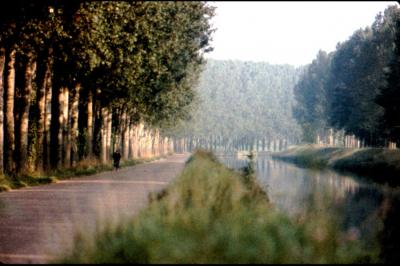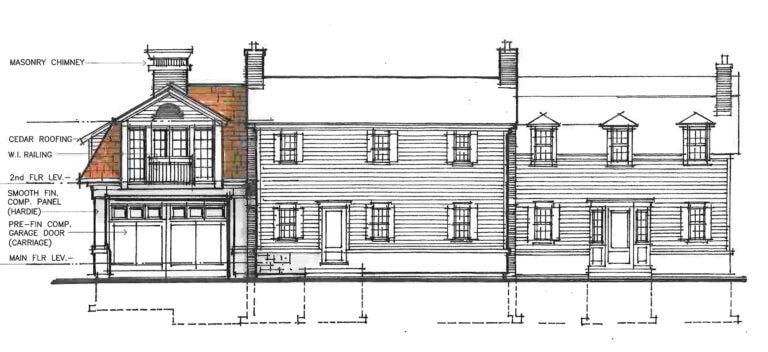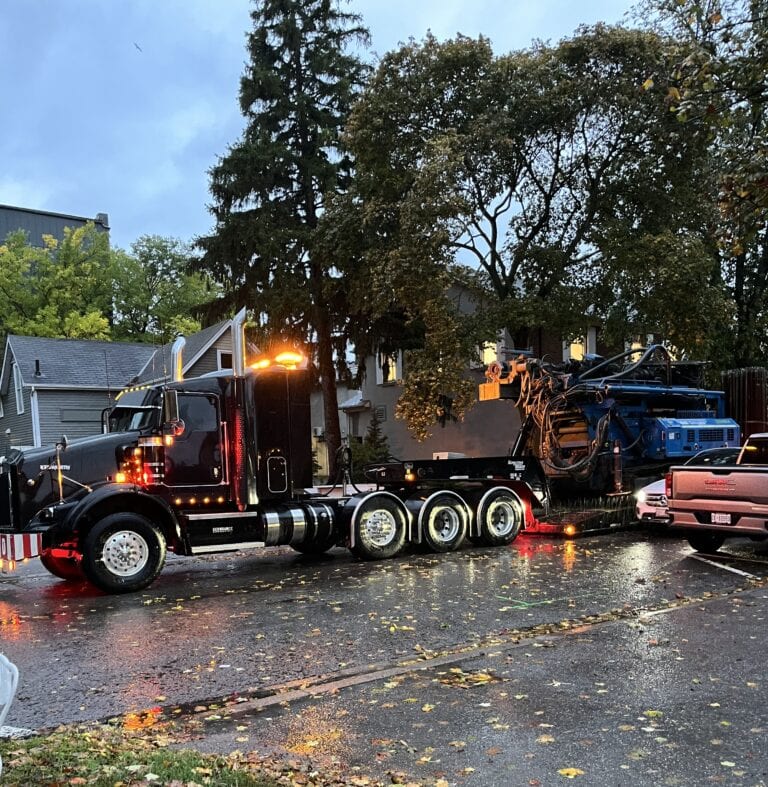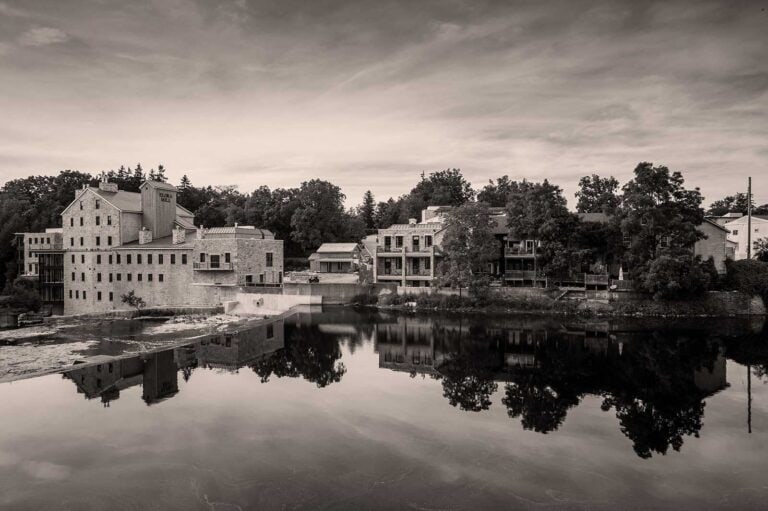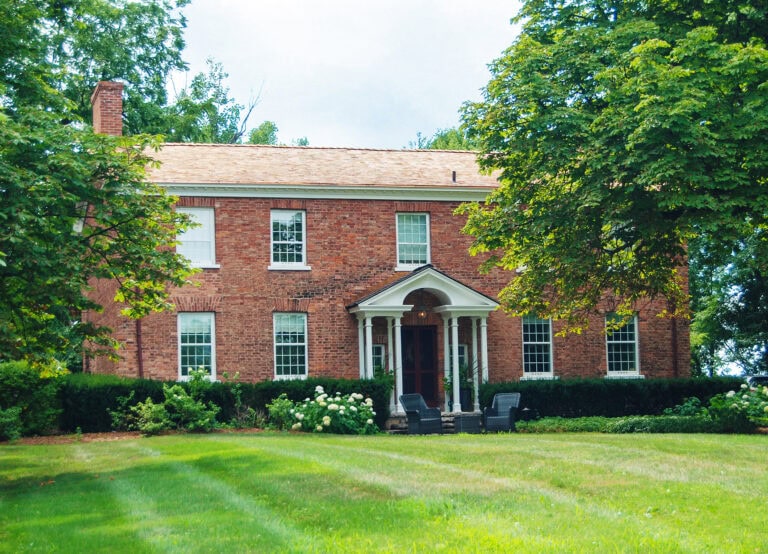Don Cameron
Special to The Lake Report
The most challenging thing after finding a parking spot in Trieste was getting out of it.
Most of this Italian port city at the northern tip of the Adriatic lies on a hillside at the foot of an escarpment with the sea on the other side. The streets are narrow and were congested even when my wife Mickey and I visited in 1979.
After much circling we found two spots and parked in one. The other was clearly too small for our car. Not so for a Fiat that arrived moments later. Four young men emerged, grabbed each corner and tucked the car into the spot. Next morning as we tried to pull out, two vehicles appeared on the single-lane street, one facing the other, each determined to have our spot. We just played the waiting game, too, until one of them blinked.
Despite parking and other problems, we always found the best way to see a country was not from a tour bus, but with a rented car.
In France, armed with a stack of yellow Michelin regional maps we would follow the yellow roads — country roads that took us far from the superhighways. As we reached the edge of one map we dug out the next and chucked the first in the back seat. At times we felt like Audrey Hepburn and Albert Finney in “Two For the Road,” complete with the swearing.
Many times we were lost.
In Budapest, our map wasn’t in sync with newer roads. But we didn’t feel too inept after a second car pulled into a vacant lot after us, a couple emerged with maps in hand and told Mickey in Hungarian, her native language, that they too were lost and lived just outside the city. Then followed lengthy circling on one-way streets to arrive at the Gellért Hotel. Totally frustrated, we parked on a side street and left the car unmoved for five days until we were leaving.
In Lisbon, arriving at 10 p.m. we found roads were being rebuilt to prepare for the city’s year as Europe’s Capital of Culture in 1994. In the dark we found ourselves driving through the bays of a bus station to get back on track.
In Split, the second-largest city in Croatia, we thought to visit the Plitvice Lakes National Park, which looked to be not far away. How wrong we were.
We started up the side of the coastal mountain range on a road with multiple hairpin bends and no guard rails. At the top we were in a land of silence except for cowbells tinkling in the distance. By the side of the road an elderly woman pulled quantities of combed wool from a box by her feet and rolled them between her palms to make yarn while keeping an eye on her sheep. In the field behind, her husband guided a plough pulled by two oxen.
With no road signs of any kind, we were relieved when a small boy flagged us down. Anxious to practise his English, he drew a map (two, in fact, because he wasn’t satisfied with the first) directing us back to the coast on a less terrifying road.
The national park, now a World Heritage Site, comprises 16 lakes arranged in cascades. They are separated by natural dams of travertine. The distinctive colours of the water, ranging from azure to green, grey or blue, change constantly depending on the minerals or organisms in the water and the angle of sunlight. In addition to tours of the lakes, the official website offers hiking, cycling, skiing and sleighing.
Cars can be temperamental. In Jamaica, as we drove to the airport in Montego Bay en route home, our rental stopped dead in a small village. Nothing we did would restart it, until three young local men arrived with a magic touch. As repayment, they asked to be taken into town, and we were glad to have them along in case the car died again.
Our first rental in France in 1977 was a tiny Renault 5 that had seen its best days. Trying to climb a hill in the centre of a village, it was reduced to a dead stop even in the lowest gear.
We had to reverse back down and take a detour. We came up with two solutions: First, pull into a track in a forest, put the gear in neutral and floor the gas pedal. For several minutes, huge clouds of black smoke filled the air and we expected the pompiers (firefighters) to arrive.
Second, arrange a purchase-repurchase next time. For less cost than a rental we bought a brand new car with the understanding that it would be repurchased at the end of the trip. The only stipulation was that after 1,000 kilometres it should be taken to a dealership for an oil change. Peugeot and Citroën still offer them under the less-scary “leasing.”
A rental car is a natural fit when staying in a gîte — a holiday home available for rent. Technically, to be called a gîte, the owner must live close by. They are generally old farmworkers’ cottages or converted outbuildings and barns within proximity of the owner’s principal residence, but today the definition has been broadened to cover more luxurious accommodations.
The one we rented at Riec-sur-Belon on the Brittany coast was an old farmhouse with all the modern conveniences and its own charm: a large pigpen attached at the back but downwind from the house, and turkeys and hens gobbling and clucking as they wandered about in front.
A short drive away was Chez Jacky, an oyster farm and restaurant where we wandered among the tanks before buying a bucket of Belons and savouring them at the gîte with a bottle of Chablis.
The restaurant today is Michelin-recommended and highly rated on Trip Advisor. The Guardian newspaper reported this month that fishing and selling of oysters in shellfish farming areas on France’s northwest coast has been banned because of a norovirus. Oyster farmers have blamed untreated sewage.
Another gîte was in the town of Ramerupt in the Champagne region and owned by someone who made horsehair mattresses by hand. He gave us a tour of his workplace before inviting us in for drinks of his homemade brandy with his wife.
At the risk of offending Québécois readers, here, for a second time I was complimented on my French, learned in Scotland and Ontario, and told, “We can understand you but not Québécois speakers.” Told that I was still studying French for my job, the gîte owner said, “I hope your teacher is from France.”
French roads in the 1970s and ‘80s were not as clearly marked as today but one could depend on every rural intersection having a sign pointing to Paris. Most signs were cement bordered and under six feet high. It was easy to turn the wrong way because the sign might be overgrown with bushes or hidden by a group of locals having a confab.
But signs for attractions or notable buildings never suffered from that problem. Pointing out the windshield I would shout, “That sign, what’s it about?” knowing Mickey’s response in advance: “Oh, it’s just another 12th-century church!”



